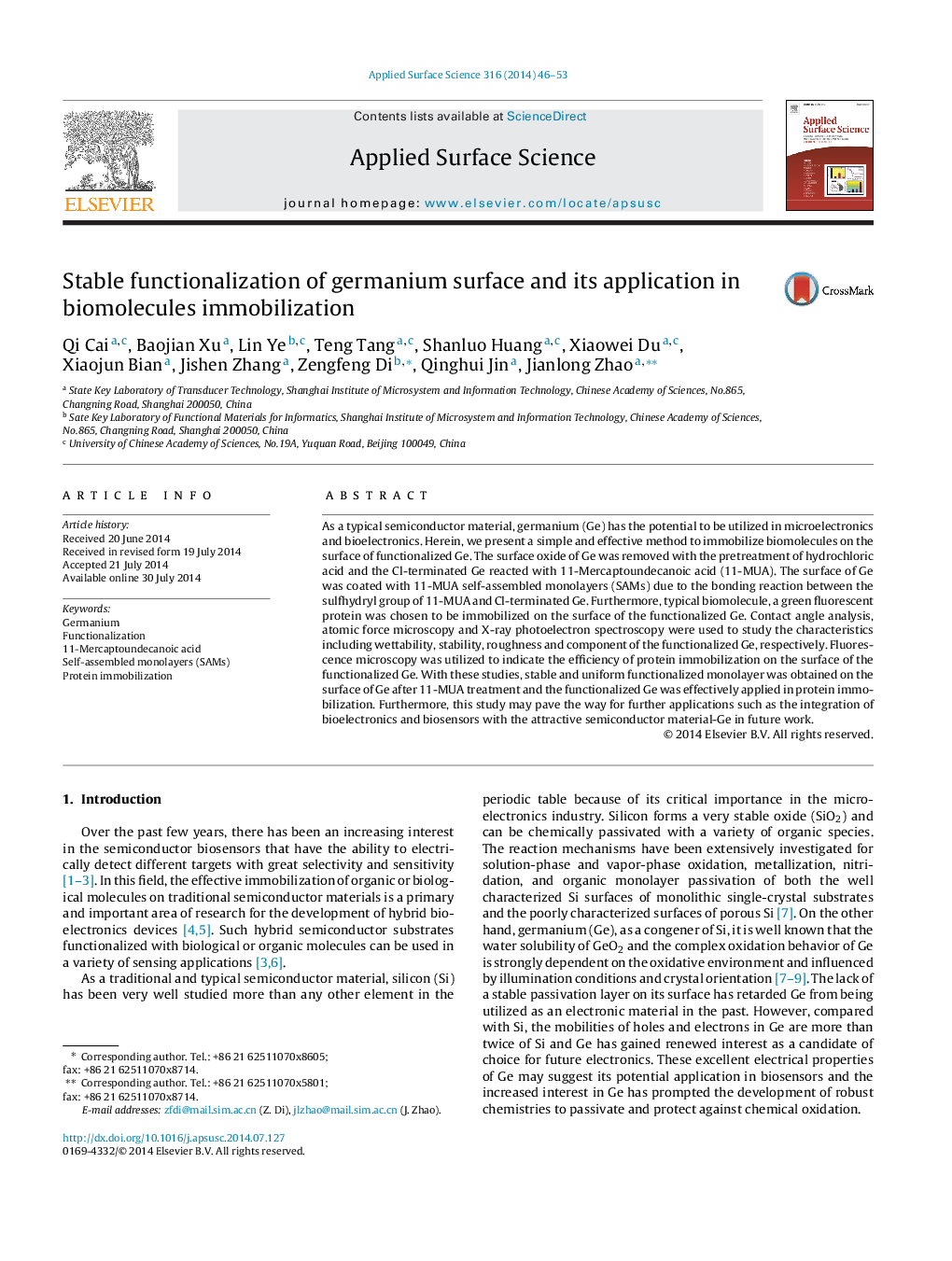| Article ID | Journal | Published Year | Pages | File Type |
|---|---|---|---|---|
| 5358093 | Applied Surface Science | 2014 | 8 Pages |
Abstract
As a typical semiconductor material, germanium (Ge) has the potential to be utilized in microelectronics and bioelectronics. Herein, we present a simple and effective method to immobilize biomolecules on the surface of functionalized Ge. The surface oxide of Ge was removed with the pretreatment of hydrochloric acid and the Cl-terminated Ge reacted with 11-Mercaptoundecanoic acid (11-MUA). The surface of Ge was coated with 11-MUA self-assembled monolayers (SAMs) due to the bonding reaction between the sulfhydryl group of 11-MUA and Cl-terminated Ge. Furthermore, typical biomolecule, a green fluorescent protein was chosen to be immobilized on the surface of the functionalized Ge. Contact angle analysis, atomic force microscopy and X-ray photoelectron spectroscopy were used to study the characteristics including wettability, stability, roughness and component of the functionalized Ge, respectively. Fluorescence microscopy was utilized to indicate the efficiency of protein immobilization on the surface of the functionalized Ge. With these studies, stable and uniform functionalized monolayer was obtained on the surface of Ge after 11-MUA treatment and the functionalized Ge was effectively applied in protein immobilization. Furthermore, this study may pave the way for further applications such as the integration of bioelectronics and biosensors with the attractive semiconductor material-Ge in future work.
Keywords
Related Topics
Physical Sciences and Engineering
Chemistry
Physical and Theoretical Chemistry
Authors
Qi Cai, Baojian Xu, Lin Ye, Teng Tang, Shanluo Huang, Xiaowei Du, Xiaojun Bian, Jishen Zhang, Zengfeng Di, Qinghui Jin, Jianlong Zhao,
